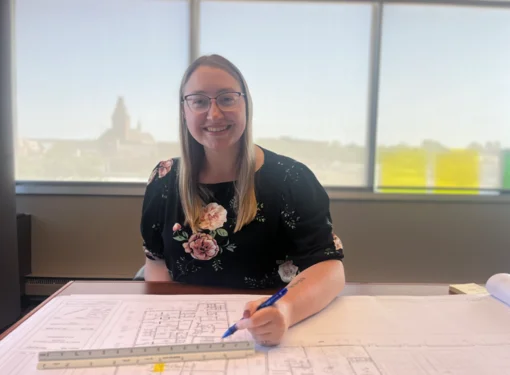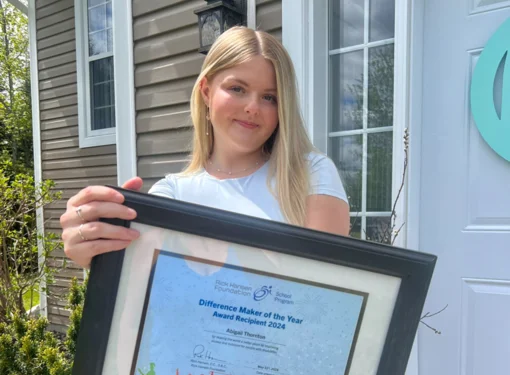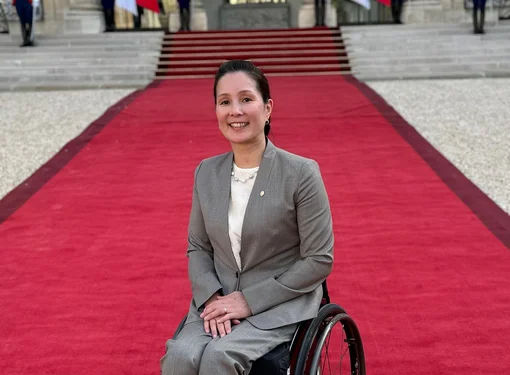Accessibility is what I’ve been fighting for my entire life
Laetitia Mfamobani is a professional woman with degrees in mathematics and philosophy. She’s also blind. And as someone with vision loss, Laetitia had to break down many barriers to get to where she is today. Many common physical barriers to accessibility, like elevators, can keep her from getting where she needs to go.
Here’s her story of why it’s so important for everyone to be able to access all the places where we live, work, learn, and play.
***
I've been blind almost my entire life. I started losing my sight as a child growing up in Gabon, on the west coast of central Africa. Because I couldn’t see, I was shunned by my classmates and forced out of elementary school. Eventually I learned braille, and within weeks I returned to the classroom with my parents’ support. I had to work three or four times harder than most students to graduate.
Fourteen years ago, I came to Canada on a university scholarship. I earned my degree, but struggled to find a meaningful job. I wanted to stay and make my home here in Canada, but many potential employers viewed my blindness as a problem. Not being able to be or feel independent affected how I saw myself. I lost my self-esteem.
Finally, after years of searching, I was excited to find work as an Access Assistant with the Rick Hansen Foundation Accessibility Certification Program. Based on my own experience, I know how important it is to improve accessibility. I was surprised to learn just how urgent this issue is in Canada. Today, almost four million Canadians live with a mobility, vision, or hearing disability. By 2036, less than 20 years from now, that number will rise to up to nine million Canadians.
As an RHF Access Assistant, I was taught about accessible design. When buildings and sites are planned and designed with a wide range of needs in mind, everyone is included ad can use and enjoy all aspects of a space. In my job, I measured the level of meaningful access in our hotels, restaurants, and community centres.

Being out in the community, speaking to people about access, made me realize that accessible design has two big advantages.One, it improves the quality of life for people with disabilities. In Canada, we should all have equal access to the places we visit regularly, like malls, parks, and offices. It’s a basic human right. Two, accessibility is great for business.
Business owners have told me, “I don’t need to accommodate blind people, because they don’t come into my business.” I say, “If you make your business more accessible, you’ll be surprised who shows up.” If businesses are accessible for everyone, more people will visit. One person with a disability going to a restaurant means at least one or two other people are coming along. This has a huge financial impact, and positive one, on our economy.
Another example of an accessibility barrier for the blind is something that most people wouldn't think twice about: elevators. Most people have no problem using elevators. They get on, push a button, and get to their destination. In my case, elevators can make me lose my way. Most elevator buttons don't have braille or raised letters. Some elevators don't have an audible voice to tell me what floor I'm on. When I don't know where I am, it's easy to get lost and feel frustrated. And that feeling can stay with me the whole day. But when I'm able to do something for myself, even something as small as finding the right floor in a building, I feel confident and capable.
A business I assessed used one of my cost effective recommendations to make its elevator more accessible. I was so happy to see that. Now anyone with a disability can use the elevator on their own. They have more independence, and the business gains new customers. What I did is going to end up helping at least one person - and I feel different knowing I've made a difference.
Removing barriers to accessibility and liberating the potential of the people with disabilities means my own potential is being liberated. My hopes, my dreams, can be fulfilled. I can hope for a better future for all.
***
Be part of the solution! Remove barriers and ensure a better future for all Canadians with your special gift - one barrier, one elevator, at a time. Donate today!






